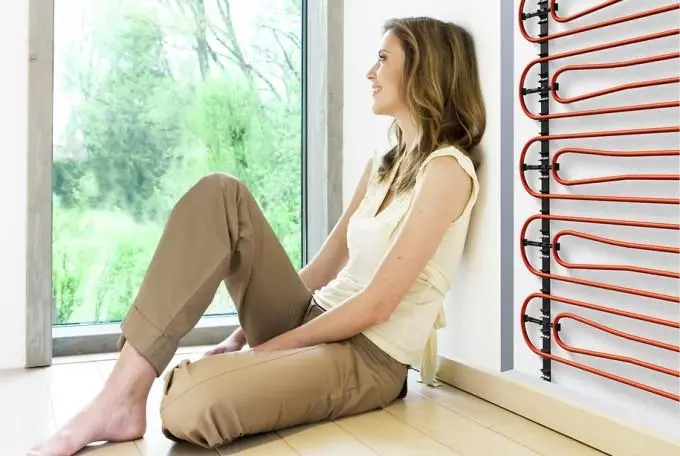
Warm walls for the heating of buildings have long been applied and this technology is not new. For example, in the palaces of St. Petersburg and to this day, you can meet this technology when the boiler was installed in the basement, and the channels were held in the walls, which circulated hot air in the walls.
Now, this technology is returned again, but only a little converting, instead of the channels in the walls we have tubes with a coolant or an electrical cable. Let's try to understand this technology, its advantages and minuses, feasibility and economy, influence on human health and microclimate in the house.
Nowadays there are many ways to warm up your home and it lead to a big problem, namely to the rational choice of the home heating system.
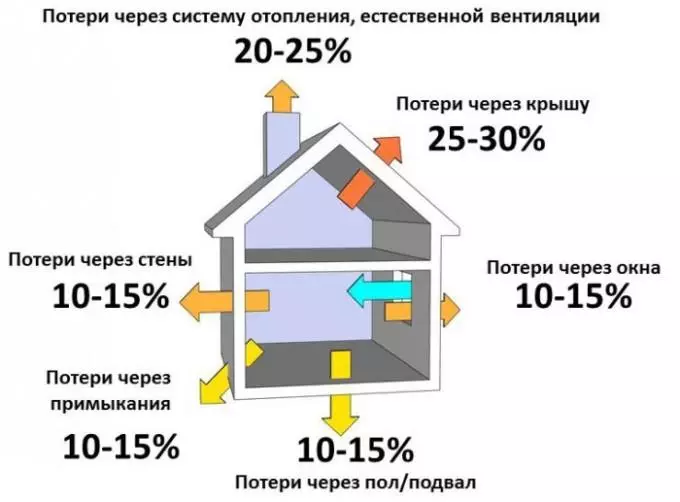
First of all, we need to figure out what kind of heating system is and why is it needed in the house? The main task of the heating system is to compensate for the heat loss at home in the heating season. That is, if the house has some kind of heat loss, such as 30 kW / h through all the enclosing structures, then we need these losses to compensate to feel comfortably and maintain a temperature of 20 ° C. This and the whole riddle lies, the type of heating system a special role does not play and does not matter what we will compensate for these losses, we will fill gas, coal or firewood, we will use warm walls, warm floors or radiators - all this does not have any values. We need a 30 kW / h to give to the house to compensate for the heat loss!
If we make a warm house, as a system, reducing its loss, for example, 1.5 times, then for heating we will need 20 kW / h. And now we have come to the most important to choose the heating system, and rather to comparing the efficiency of different systems. It is no secret to anyone that you need to choose a heating system with the highest efficiency.
Principle of operation of warm walls
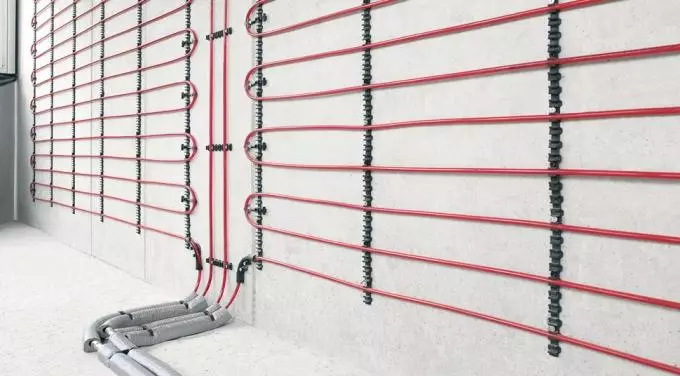
Let's look at the heating of the house with the help of warm walls. What do we write advertising articles on this technology? And the fact that using warm walls as a heating device, we increase the area of the heater, thereby lower the temperature of the coolant.
Let's draw an analogy with warm floors. For example, if we warm up the warm floor greater than 29 ° C, then the person begins to feel very uncomfortable, it is hot, the balance of heat exchange is disturbed. According to European standards, the temperature difference between air and the surface of the warm floor should not be more than 9 ° C. For example, in the residential room, the regulatory temperature is 20 ° C, then the floor we can warm up to 29 ° C. If it is a bathroom, where the air temperature should be 24 ° C, then the floor we can warm up to 33 ° C - no longer comfortable, less - please.
Article on the topic: Installing a convector with your own hands
Warm walls we have exactly the same limitations, both from the point of view of regulatory documents and human physiology, because a higher temperature is perceived, as not comfortable. The only difference is that this difference is 11 ° C.
If the wall has heat in the residential room, its temperature should not exceed 31 ° C. This temperature will be comfortable for a person, which is located at a distance of 1 m from the wall. That is, the temperature difference between the wall surface and the air will be 31 ° C - 20 ° C = 11 ° C.
Why will a person be comfortable if the temperature difference is higher? We perceive the temperature as an air contact, in this case, go to the exchange between the air and us, and the second option - like radiant heat. And this is what it turns out, the higher the surface temperature, the stronger the radiant heat. Therefore, the large temperature difference between the air and the heating surface will create a strong thermal stream and man feels not comfortable in this room.
In this and lies all the tricks, as 85% of the heat of the wall is transmitted to a person for the means of radiant heat. But to get these 85%, the coolant in the warm wall should have a temperature of 40 ° C. This is silent by sellers who recommend warm walls as a home heating system. The same temperature in the radiators of the heating system and by and large, the boiler does not care that heated walls or radiators. In a well-insulated house, the radiator with a temperature of the coolant 40 ° C is well coped with its task.
From this it follows that lowering the temperature of the coolant below 40 ° C, we sharply cut the radiant heat that emits the wall. Therefore, it makes no sense to make a warm wall, as we do not get a comfortable heat that we get with a higher heat carrier.
Comparing the warm floor and walls, we have that the human projection on the floor is significantly less than on the wall (there is a contact area with radiant heat). Therefore, if we say that the warm wall gives radiant heat, then its temperature should be 40 ° C, and as we already know, this temperature is not comfortable for a person.
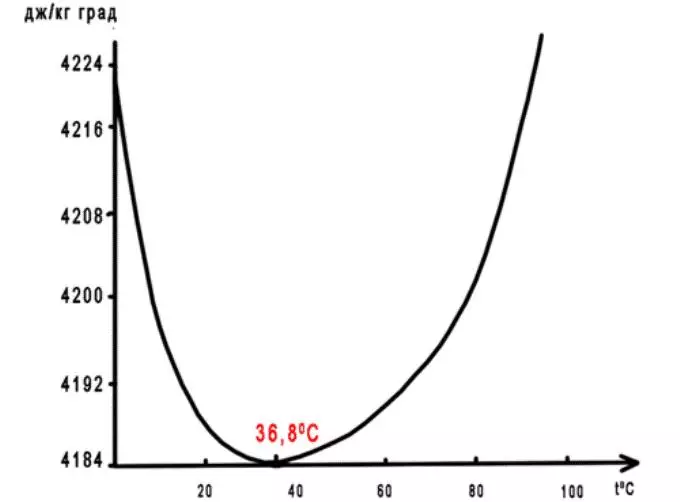
Why 40 ° С? The graph of the specific heat capacity of water has not a linear dependence. Its bottom point, where the smallest water heat capacity will be 36.8 degrees. That is, this temperature at which water is easiest to heat for 1, 2 or 3 degrees and need to spend less energy.
The statement that at low heat carrier temperature, we need to spend less energy to heat the house is not true.
The fact is that any heating system is an intermediary, and it has to heat the air around us. Since the water is an intermediary, and between us and the heating device there is air, which has a low heat capacity and need to be heated, but in which it is absolutely not important to warm it, then we perceive the radiant heat directly, but for this you need a high temperature.
Article on the topic: how to make a crate on the loggia and the balcony
For efficient operation of a warm wall, a high temperature is needed, a source of radiant heat!
Heating with a warm wall of the house is economically profitable or not?
Let's look at the warmed outdoor wall of our house and make a heat engineering calculation. The calculation takes into account the air temperature in the room and the outer air temperature. Due to warm air inside the house, the wall is heated, which contacts with a colder outer air and due to this begins to lose heat. We compensate these losses. In the construction norms, it is said that the surface temperature of the wall inside the room should not be lower than 4 ° C on the air temperature in this room. For example, the air temperature in the residential room is 20 ° C, then the temperature of the wall should not be below 16 ° C.
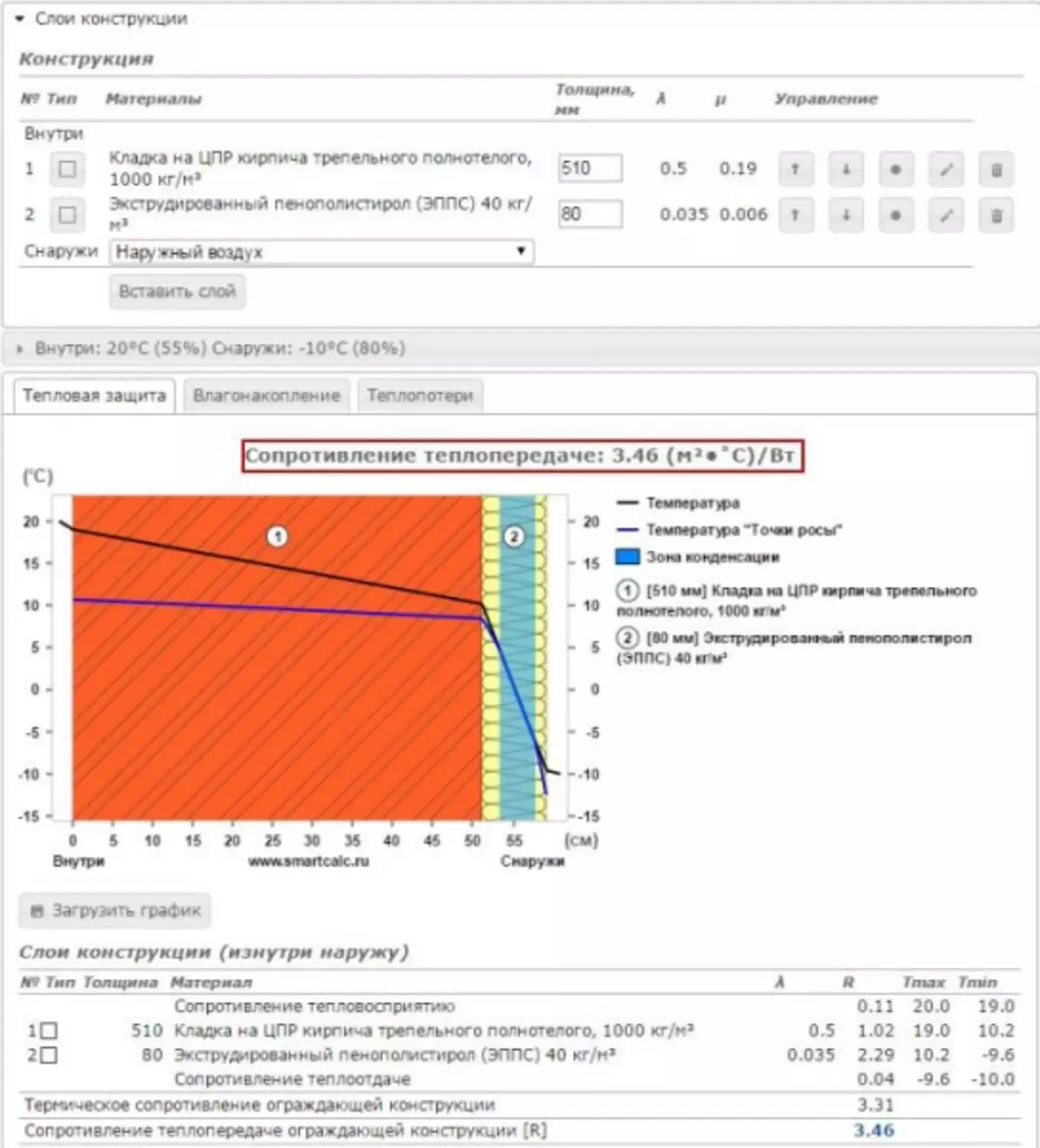
Let's look at the heat engineering of the wall. We have a brick wall of 510 mm and insulated EPPS 80 mm (wall construction and construction region in this case does not play any role). The heat transfer resistance according to the calculator data: 3.46 (m² • ˚С) / W.
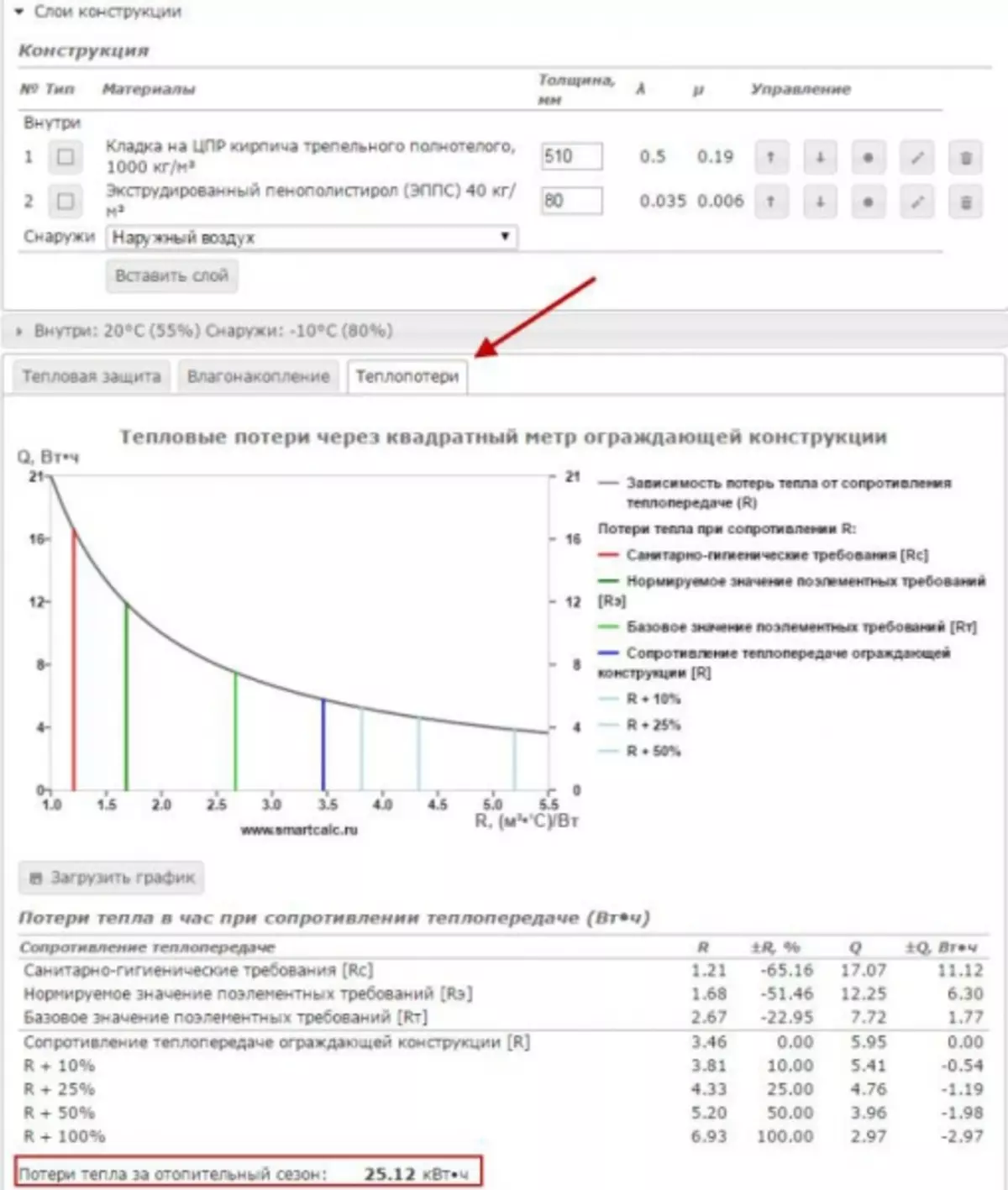
We go into the Tseropotieri tab and below we see that heat loss for the heating season is 25.12 kW • h to 1m2 walls. This is in the case when the house is heated by radiators or warm floors. But if we set warm pipes into the walls, the temperature of the inner part of the wall increases significantly and will not be 16 ° C, and 40 ° C.
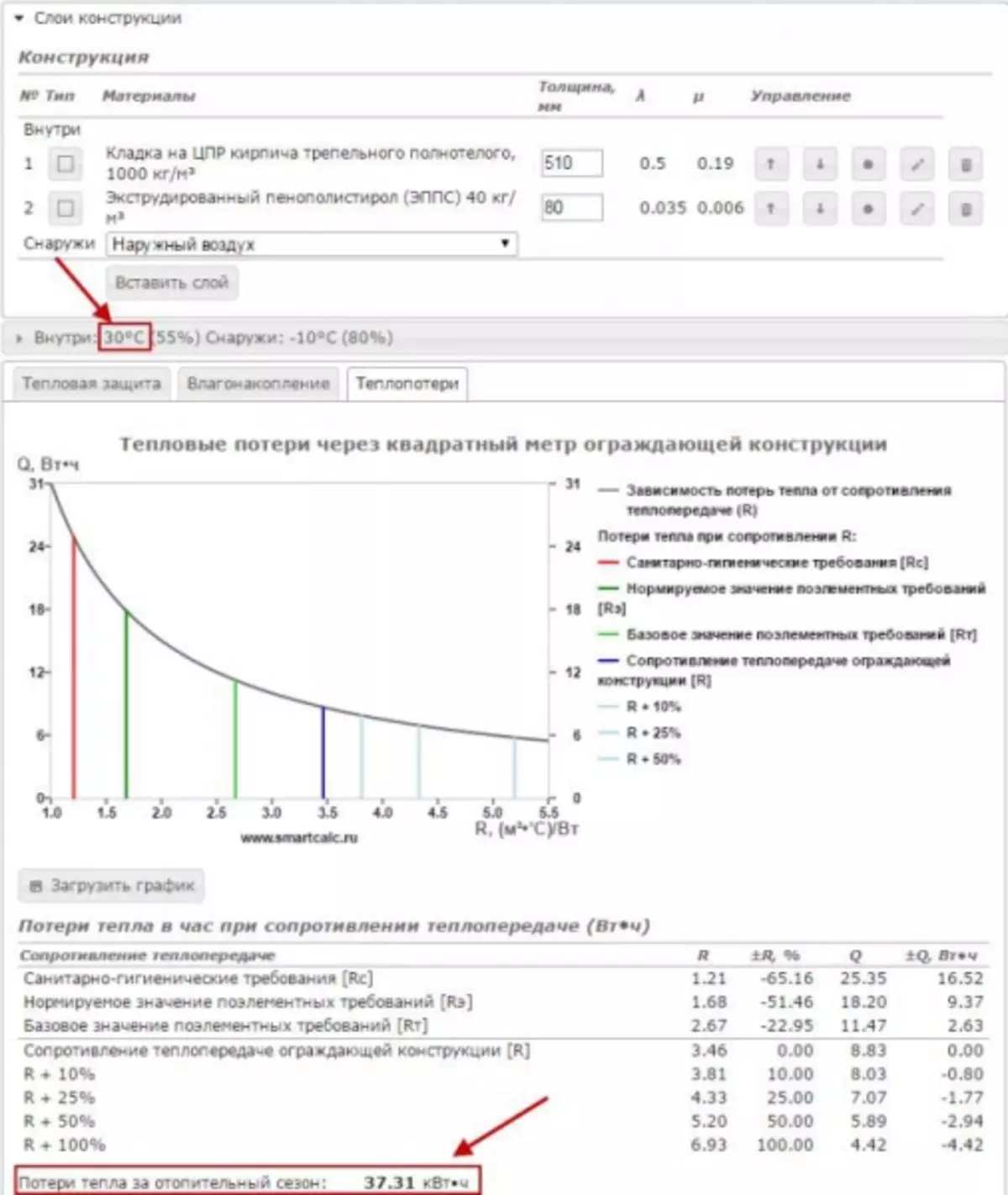
Returning back to the calculator and increase the temperature to 30 ° C (unfortunately, it does not allow up to 40 ° C (unfortunately), we look at heat loss, they make up 37.31 kW • h with heating with a warm wall, which is one and a half times more than the previous result.
Conclusion: At the inner air temperature of 20 ° C, the loss of the house will be significantly higher, if it is heated with warm walls, due to the fact that the temperature of the outer wall will be higher, and the higher the temperature difference, the greater the heat loss. In the heating season you will need to pay more money for gas, electricity, firewood or other type of fuel.
What needs to be done to reduce heat loss?
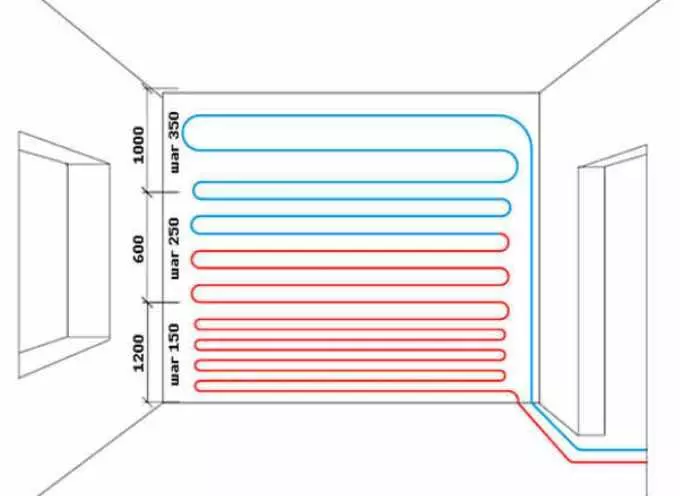
To reduce heat loss from warm walls, they need to be arranged in the interior walls that are not in contact with the outer air. In this case, we will be able to warm two rooms with one wall, if it is a partition, for example, between two bedrooms. But if the inner wall is adjacent to the outer wall, then we will warm up and part of the outer wall, and these are already elevated heat loss. Therefore, you need to retreat from the outer wall.
It should also be remembered that the warm walls cannot be closed with anything, for example, install the cabinet or other elements of the interior near them. Also near the warm walls, a bed cannot be installed, a person will feel no comfortable.
Article on the topic: How to update the grout on the tile in the bathroom?
And if there are warm walls that borders with the corridor, because the corridor is also a house and heat will stay in the house? But there are no heating in the passing areas, since the warm air falls from the residential rooms. And if you still wash the passage zones, then this excess heat will simply come into ventilation and again we get heat loss.
Conclusion: It is possible to do a warm wall only between residential premises, only then we can talk about some expediency and rational use of energy resources.
Reducing heat loss, constructive solutions
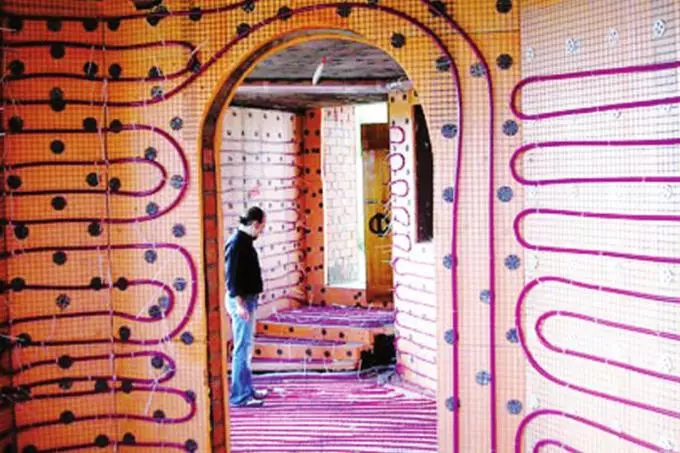
You still decided to make warm walls in the house, despite all the above arguments of the uneconomicity of this technology. How to proceed?
There are two ways to make the wall design correctly:
- Enlarge the thickness of the insulation outside.
- Install an additional insulation from the inside of the wall, and then mount the warm walls.
In the first cases, we need to spend more money on the insulation. In the second - we close the wall with insulation from the inside, thereby laying all the properties of the wall material, we create a greenhouse effect (with EPPS insulation) and we will reduce such properties of the wall as sorption, capillary activity, inertia, etc. If the house is built of brick, then this is essentially money thrown on the wind.
Conclusion: Warm wall is an expensive system of home heating, which leads to an increase in the cost of building a house, a very dubious efficiency in operation, so that the person felt comfortable, you need to make warm all the walls in the house, etc.
Where better to use the system "Warm Wall"?
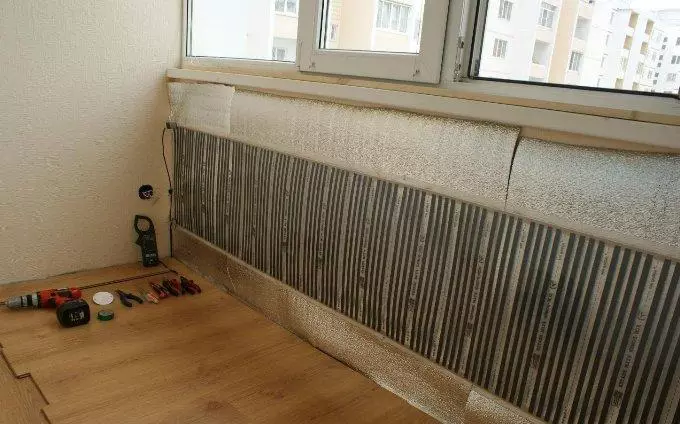
If technology exists and allows you to solve some task, you can not forget about it, we must remember it and apply.
Warm wall can be used as an additional heat source in places where for some reason it is impossible to use other technologies. For example, warm floors are made in the house and due to the large number of open areas are not enough to heat the entire volume. In this case, warm walls can come to the rescue, which will increase the heating area, as these technologies resemble and have the same mode of operation.
The effect of warm walls per person
As with warm floors in the warm walls, the main thing is not to overdo it and do not increase the temperature more permissible at 40 ° C, since the excess of heat negatively affects human health.
Subjectively and psychologically, a person is much more pleasant when the wall radiates warm, and does not give cold.
If the children get used to the warm floor and to warm walls, then go to kindergarten, they immediately begin to hurt, as the houses have created greenhouse conditions. The human body, in such conditions, begins to lose immunity. Therefore, the warm walls along with warm floors should be an additional source of heat, and not as the main one!
